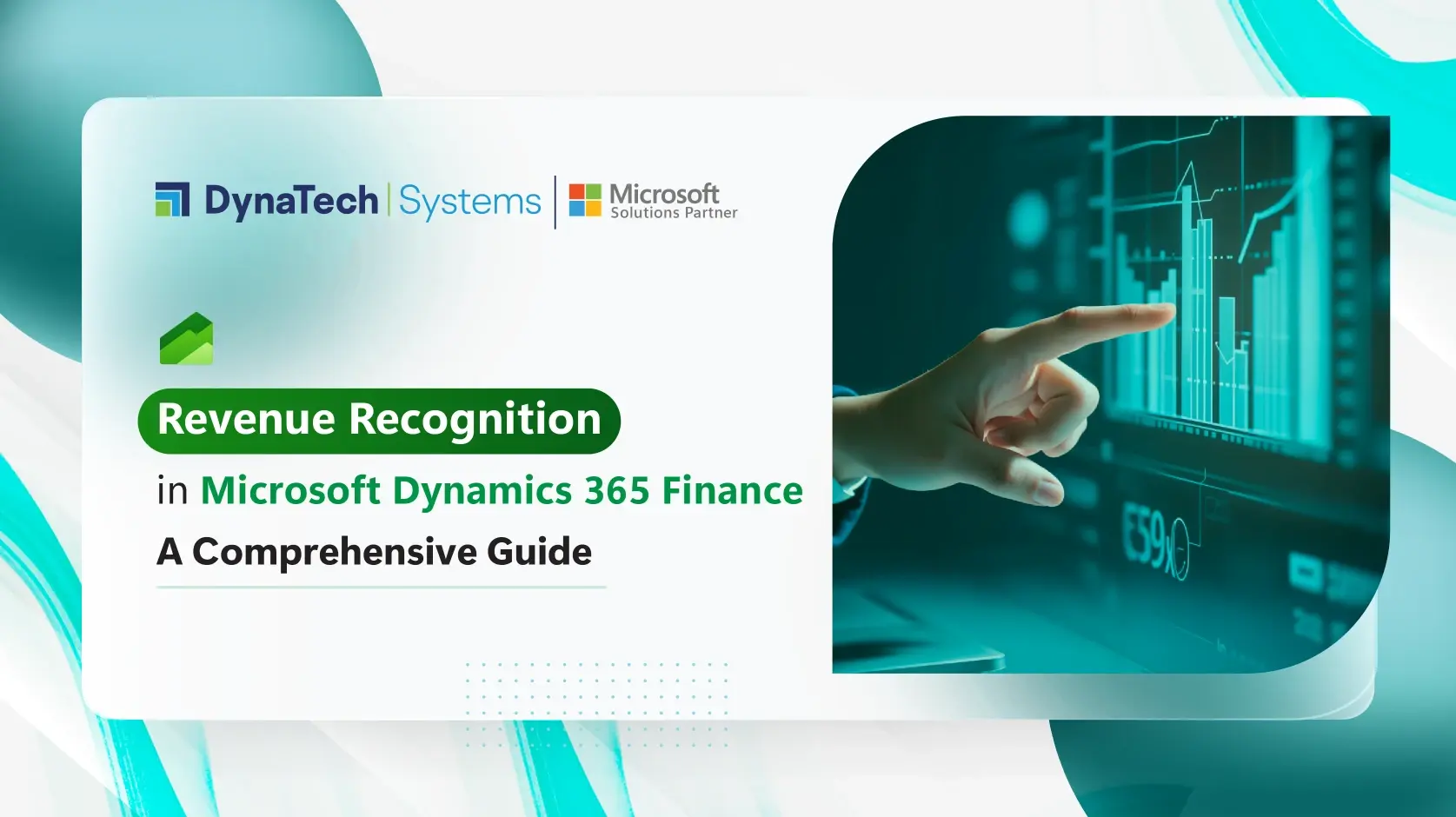Recognizing revenue is a critical aspect of financial management for businesses. It involves identifying revenue generated from the sale of goods or services and is essential for compliance with accounting standards and reflecting the company’s financial status accurately. Microsoft Dynamics 365 Finance is an ERP solution with powerful tools for managing finances, including accounts receivable and revenue recognition. In this blog, we will explore the details of revenue recognition in Microsoft Dynamics 365 and how it can benefit businesses.
The Basics of Revenue Recognition
Revenue recognition is a procedure of recognizing or identifying the revenue when it is earned, rather than when the payment is received. The Financial Accounting Standards Board (FASB) and International Accounting Standards Board (IASB) are the regulatory committees that establish the Revenue recognition principles. These principles require that revenue be recognized when it is earned, which means when goods or services have been delivered or performed, and the customer has accepted them.
The process of revenue recognition can be employed to accomplish two tasks:
1. To Allocate Revenue by considering the value of individual components in multi-element orders, thus ensuring that the correct revenue amount is recognized.
2. To Defer Revenue by following a revenue schedule that outlines the time frame and percentages for recognizing revenue over the contractual period.
Revenue Recognition in Microsoft Dynamics 365 Finance
As an ERP solution, Microsoft Dynamics 365 is equipped with powerful tools to handle financial processes, including revenue recognition and accounts receivable. Implementing the right tools and processes can simplify and automate the complex process of revenue recognition. By automating the revenue recognition process with the revenue recognition feature of D365 Finance, businesses can ensure compliance with accounting standards and reduce the risk of errors. D365 Finance allows users to create revenue recognition schedules based on policies, such as product or service type, payment terms, and delivery date. The system then calculates the amount of revenue to be recognized during each period based on the schedule criteria.
In addition, the reporting feature of Microsoft Dynamics 365 Finance is a valuable tool for managing revenue recognition procedures. It enables businesses to view revenue recognition schedules and use various criteria to make informed decisions.
Setting up the Revenue Recognition feature in Microsoft Dynamics 365 Finance
Once the business receives the customer invoice, the process of revenue recognition initiates. When an invoice is issued for services, insurance, support, or resources that will be provided to the customer over a duration of time, the full amount of the invoice should not be recognized as revenue at once. Rather, the amount should be recorded as deferred revenue and then gradually recognized over the course of the agreement with the customer. This arrangement to provide something valuable over a specific period can be viewed as a contract, and the contract terms represent the duration of the agreement.
The system needs to be configured to use the revenue recognition feature in Microsoft Dynamics 365 Finance. Setup can be done using the Revenue recognition module. Though it does seem like an overwhelming task, once the setup is in place, it becomes a cakewalk.
1. Set up a Journal name for the purposes of Revenue recognition.
2. Set up Revenue recognition schedules to match the business prerequisites.
3. Finish the posting setup for the new revenue transaction types, containing deferred.
Process of Revenue recognition
Once the setup is in place, the execution of the Revenue recognition module can be done. Sales orders can be created and invoiced even without the use of Projects. Microsoft Dynamics 365 Finance generates a revenue schedule by categorizing the sales order line based on the contract terms and revenue schedule. This revenue schedule will consist of revenue totals as well as the dates when the revenue totals can be recognized.
Microsoft Dynamics 365 F&O reviews the Revenue schedules generated by the system by either running an inquiry or examining the workspace. They then create the Revenue recognition journal and post it at a suitable time.
Further, businesses have the option to review the Revenue schedule before the Sales order is invoiced. This is termed as ‘expected revenue schedule’. If there is any issue with the revenue streams, it can be placed on Hold so there is no error in recognizing the revenue. For recurring revenue streams, such as subscriptions or maintenance contracts, automatic invoicing, and revenue recognition schedules can be created.
Additionally, generate reports that display revenue recognition by period, by product or service, or by customers. These reports provide intuitive insights which enable organizations to identify trends, evaluate the efficacy of revenue recognition policies, and conclude smart business decisions.
Conclusion
Managing revenue recognition can be a challenging task, but by using the right tools and processes, the process can be streamlined and automated. Microsoft Dynamics 365 Finance provides a powerful revenue recognition module that helps businesses manage their accounts receivable and ensure compliance with accounting standards. The reporting feature of D365 Finance is also noteworthy, as it provides accurate reports based on numerous revenue recognition criteria, allowing businesses to make informed decisions. Consider integrating other reliable tools like SAP and Salesforce to further escalate the process of revenue recognition.
To learn more about revenue recognition and Dynamics 365 Finance, get in touch with the professionals of DynaTech Systems – a Gold-certified Microsoft partner, at sales@dynatechconsultancy.com.




























